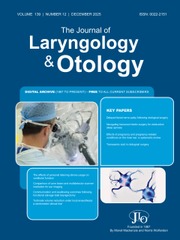No CrossRef data available.
Article contents
A Tinnitus Synthesizer Physiological Considerations
Published online by Cambridge University Press: 27 March 2025
Extract
This paper deals in detail with the technique of tinnitus synthesis used in a medical and audiological survey of 200 cases of subjective tinnitus (Hazell, 1979). The significance of other physiological data with respect to tinnitus is discussed, including cochlear resonances, electrocochleographic findings and the results of cochlear iontophoresis of local anaesthetic. The significance of differential masking is also discussed.
The instrument used to produce a subjective match of the patients’ tinnitus was a commercially available music synthesizer produced by EMS Limited London (Fig. 1). This instrument and its near relatives are much used by the purveyors of modern and popular music and may be purchased for the price of a good clinical audiometer. The synthesizer consists of a bank of oscillators capable of producing sine, ramp or square waves between .025 Hz. and 16.7 kHz. The shape of the wave form is also continuosly variable. The machine also incorporates a noise generator with ‘colour’ control.
- Type
- Session V—State of the Art: Past, Present and Future (Moderator: Ellis Douek)
- Information
- The Journal of Laryngology & Otology , Volume 95 , Issue S4: Proceedings of the First International Tinnitus Seminar (New York, 8-9 June, 1979) , September 1981 , pp. 185 - 195
- Copyright
- Copyright © JLO (1984) Limited 1981


